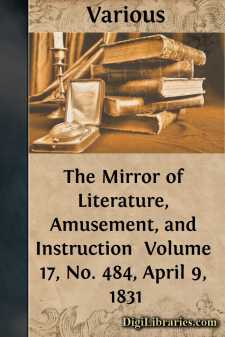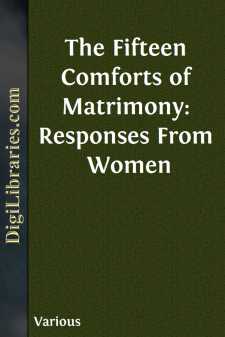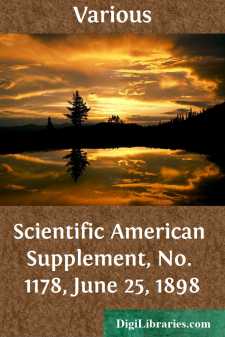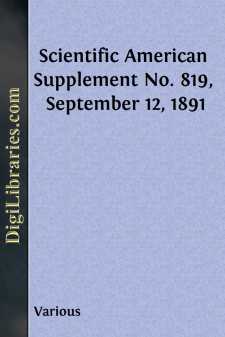Categories
- Antiques & Collectibles 13
- Architecture 36
- Art 48
- Bibles 22
- Biography & Autobiography 813
- Body, Mind & Spirit 142
- Business & Economics 28
- Children's Books 17
- Children's Fiction 14
- Computers 4
- Cooking 94
- Crafts & Hobbies 4
- Drama 346
- Education 46
- Family & Relationships 57
- Fiction 11829
- Games 19
- Gardening 17
- Health & Fitness 34
- History 1377
- House & Home 1
- Humor 147
- Juvenile Fiction 1873
- Juvenile Nonfiction 202
- Language Arts & Disciplines 88
- Law 16
- Literary Collections 686
- Literary Criticism 179
- Mathematics 13
- Medical 41
- Music 40
- Nature 179
- Non-Classifiable 1768
- Performing Arts 7
- Periodicals 1453
- Philosophy 64
- Photography 2
- Poetry 896
- Political Science 203
- Psychology 42
- Reference 154
- Religion 513
- Science 126
- Self-Help 84
- Social Science 81
- Sports & Recreation 34
- Study Aids 3
- Technology & Engineering 59
- Transportation 23
- Travel 463
- True Crime 29
The Mirror of Literature, Amusement, and Instruction Volume 17, No. 484, April 9, 1831
by: Various
Categories:
Description:
Excerpt
CORFE CASTLE.
The annexed Engravings are an interesting page in the early history of our country, and deserve all the space we have appropriated to them. Their political notoriety, of much less interesting character, we leave to be set down, said, sung, or set aside, elsewhere.
Corfe Castle nearly adjoins a town of the same name: both are situate in the Isle of Purbeck; and their histories are so incorporated, that we shall not attempt their separation.
The town, according to the Beauties of England and Wales, vol. iv. p. 386, is nearly in the centre of the Isle, at the foot of a range of hills, on a rising ground, declining to the east. Its origin must undoubtedly be attributed to the Castle, which existed previous to the year 980; though the town itself does not appear to have attained any importance till after the Conquest, as it was wholly unnoticed in the Domesday Book. The Manor and Castle seem always to have descended together, and were often granted to princes of the blood, and the favourites of our kings, yet as often reverted to the Crown by attainder or forfeiture. In the reign of Richard the Second, they were held by Thomas Holland, Earl of Kent, jointly with Alicia, his wife. In the reign of Henry the Fourth, they were granted to the Beauforts, Earls of Somerset; but were taken from that family by Edward the Fourth, who bestowed them successively on Richard, Duke of York, and George, Duke of Clarence; on the attainder of the latter, they reverted to the Crown. Henry the Seventh granted them to his mother, the Countess of Richmond, for life. In the 27th of his successor, Henry the Eighth, an act of parliament was passed, by which they were given to Henry, Duke of Richmond, his natural son. After his death they reverted to the Crown, and were, by Edward the Sixth, bestowed on the Duke of Somerset; whose zeal for the Reformation was undoubtedly invigorated by the numerous grants of abbey lands made to him after the suppression of the monasteries. On the duke’s attainder, the demesne lands of the Castle were leased for twenty-one years, on a fee-farm rent of 7l. 13s. 4d. In the 14th of Elizabeth, the Castle and Manor, with the whole Isle of Purbeck, were granted to Sir Christopher Hatton, whose heirs continued possessors till the commencement of the 17th century, when the Manor and Castle were given by Sir William Hatton to his lady, Elizabeth, daughter of Thomas, Earl of Exeter, and afterwards second wife to Lord Chief Justice Coke, who sold them, in the year 1635, to Sir John Bankes, Attorney-General to Charles the First, and afterwards Lord Chief Justice of the King’s Bench. His descendant, Henry Bankes, Esq. and representative for this borough, is the present owner.
Though this is an ancient borough by prescription, it was not incorporated till the 18th of Queen Elizabeth, when a charter was obtained by Sir Christopher Hatton, by which the inhabitants were invested with the same liberties as those of the Cinque Ports; besides being favoured with various other privileges....












